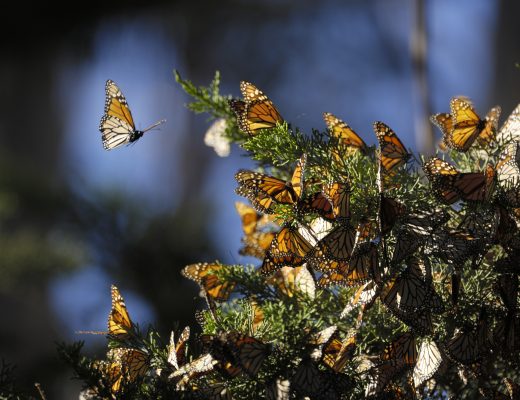
By Bob Cunningham
Most everyone knows that trees clean the air by removing pollution from the atmosphere, improving air quality and human health.
Trees, however, also can help protect our planet’s precious freshwater supplies. That’s especially important to note with the observance of World Water Day on March 22.
It is a United Nations Observance held annually since 1993, focusing on the importance of freshwater. The day promotes taking action to tackle the global water crisis; this year’s theme is valuing water.
Arbor Day Foundation and partner Keystone 10 Million Trees are doing their part to value water by working together with the Chesapeake Bay Foundation. The Arbor Day Foundation enables CBF to continue the partnership into its fourth year by supporting more than 67,600 trees to be planted this spring.
Brenda Lee Sieglitz manages the Keystone 10 Million Trees Partnership with the Chesapeake Bay Foundation in Harrisburg, Pennsylvania.
“I lead 167 national, regional, state, and local agencies, as well as conservation organizations, watershed groups, conservancies, outdoors enthusiasts, businesses, and individuals with a goal to plant 10 million trees across Pennsylvania by 2025,” she said. “I do this through working with growers to increase supply of native trees, collaborate with partners and landowners to find land to plant these trees and develop innovative funding and methods for landowners to obtain native trees that will improve their land.
“All of this work is done in an effort to reduce sediment and nutrients from flowing from the Susquehanna River to the Chesapeake Bay.”
The importance of reforestation
The Keystone 10 Million Trees Partnership was launched in 2018. It is a multi-year effort designed to spark governmental action, public attention, and funding to rally efforts around Pennsylvania’s Chesapeake Clean Water Blueprint.
This collaborative effort’s ambitious goal is to add 10 million new trees by 2025 in Pennsylvania’s agricultural riparian buffers, urban and suburban landscapes, and abandoned mine lands.
A coalition of 167 diverse organizations are committed to making the Keystone 10 Million Trees Partnership goal a reality. This growing list of partners includes a range of local, regional and national conservation groups, commonwealth and federal government organizations, nursery and tree supply businesses, and other businesses throughout Pennsylvania and the Mid-Atlantic.
As part of its Making History Campaign (MHC), CBF launched a strategic effort to expedite the reduction of nitrogen, phosphorus, and sediment pollution from Pennsylvania’s rivers and streams that feed into the Chesapeake Bay.
Through this effort, CBF is driving partnership efforts to boost the production of native trees while also aligning with partners to identify strategic planting locations.
“With a broad and targeted range of partners, we are accelerating native tree planting efforts in identified locations, raising public awareness and helping establish sustainable, science-based management of tree planting and ongoing tree care and maintenance,” Sieglitz said.
“Ultimately, adding 10 million native trees to the Pennsylvania landscape will improve the Bay’s water quality by stabilizing stream and river banks, filtering water flow from agricultural, urban, and abandoned mine land environments and boost the economy through trees’ ability to reduce public health costs, crime, and engaging local industries such as nurseries, garden centers, and like-minded industries.”
Chesapeake Bay Foundation’s mission
Founded in 1967, the CBF is the largest independent conservation organization dedicated solely to saving the Chesapeake Bay. Serving as a watchdog, the Foundation fights for effective, science-based solutions to the pollution degrading the Chesapeake Bay and its rivers and streams.
The CBF motto, “Save the Bay,” is a regional rallying cry for pollution reduction throughout the Chesapeake’s six-state, 64,000-square-mile watershed, which is home to more than 18 million people and 3,000 species of plants and animals.
With offices in Maryland, Virginia, Pennsylvania, Washington, D.C., and 15 field centers, CBF leads the way in restoring the Bay and its rivers and streams, Sieglitz said.
“For more than 50 years, we have created broad understanding of the Bay’s poor health, engaged public leaders in making commitments to restore the Chesapeake and fought successfully to create a new approach to cleanup that features real accountability: Pennsylvania’s Clean Water Blueprint,” she said. “But the Bay is still a system dangerously out of balance. We continue to engage in education, advocacy, litigation and restoration to turn the tide and leave a legacy of clean water for future generations.”
A strong partnership with the Arbor Day Foundation
Arbor Day Foundation has partnered with the Chesapeake Bay Foundation’s Pennsylvania reforestation efforts since 2013.
“Arbor Day Foundation has significantly supported the Keystone 10 Million Tree Partnership’s reforestation efforts and assisted us with planting over 200,000 trees since 2018 across the Commonwealth of Pennsylvania,” Sieglitz said. “Streamside forested buffers, with native trees and shrubs planted along the waterway, are one of the most cost-effective practices for reducing nitrogen, phosphorus and sediment pollution in both rural and urban landscapes.”
The project addresses the agricultural, forestry, and stormwater goals within the Pennsylvania Chesapeake Bay Watershed Implementation and makes progress towards the goal of 86,500 acres of buffer within the Susquehanna and Potomac watersheds.
“By providing trees at no charge to our 167 partners, it allows those partners to use funds they would have spent on trees to leverage those available funds towards other project costs such as site preparation, installation, maintenance and/or landowner incentives,” Sieglitz said. “These projects require so much more than just the tree, but the tree is an important part of the success story. We are contracting with four growers in Pennsylvania and Maryland to contract grow approximately 500,000 trees for delivery in 2022. Those trees will be available to our partners in 2022 and gives us better control over the tree product, increased purchasing power, and inventory control.”
Most of these plantings are within agricultural landscapes to assist with restoring water quality and protecting the local environment, Sieglitz said. The complex root networks will reduce polluted runoff and erosion, preventing sediment and chemicals from entering streams. As native tree species, they will support natural ecosystems by providing habitat and food for birds, mammals, and insects.
The trees will also reduce heating and cooling bills, increase property values, and trim flood damage and stormwater treatment costs. Once mature, the trees can each absorb carbon dioxide at a rate of 48 pounds per year, helping mitigate greenhouse gas emissions. Over time, these landscapes evolve toward healthier wildlife and human communities.
Funding helps farmers to use best practices to improve the Bay
Ideally, CBF would like to be able to pay landowners to incentivize them to plant trees in critical areas of need to reduce sediment and nutrients from going into waterways that lead to the Chesapeake Bay.
“Without that critical funding, we are relying solely on the goodwill of landowners,” Sieglitz said. “There is plenty of that, but not enough to move the needle. At the end of the day, many of the landowners we need to influence are farmers who are already suffering great financial loss on their farm and/or their businesses. Asking them to take crops out of production to plant trees is a big ask. We want to continue to show them the good that trees can do for their land in terms of soil health, agroforestry, silvopasture and more.
“There are opportunities for farmers when it comes to trees, but we need more funding to help the landowners see that incredible value.”



